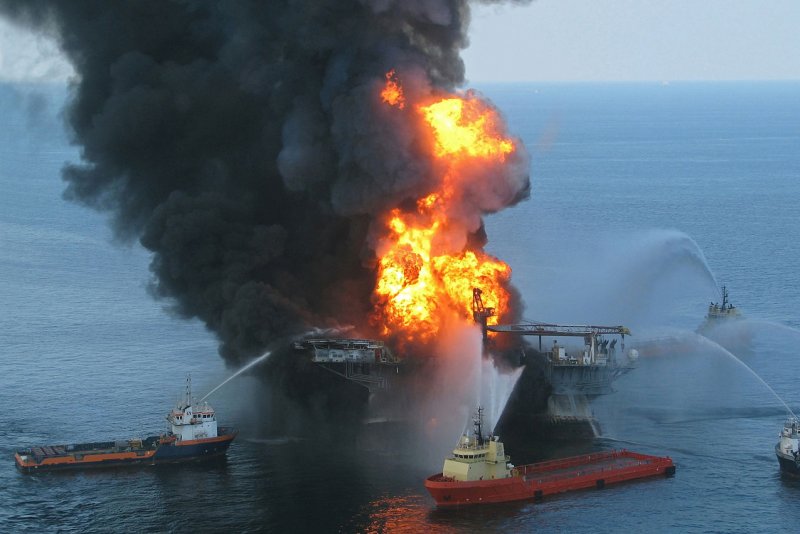Deepwater Horizon oil spill was bigger than previously thought, study finds

The Deepwater Horizon disaster was the largest oil spill in U.S. history. Photo courtesy of U.S. Coast Guard
Feb. 12 (UPI) -- Oil from the Deepwater Horizon disaster spread well beyond the spill footprint established by satellites, according to new analysis by scientists at the University of Miami.
To determine the true size of the 2010 Deepwater Horizon oil spill, researchers supplied oil-transport models with water sampling results and remote sensing data. The simulations confirmed that a portion of the oil spilled in the wake of the deadly explosion remained invisible to satellites, but proved toxic to marine wildlife.
"We found that there was a substantial fraction of oil invisible to satellites and aerial imaging," Igal Berenshtein, lead author of the new study and a postdoctoral researcher at Miami's Rosenstiel School of Marine and Atmospheric Science, said in a news release. "The spill was only visible to satellites above a certain oil concentration at the surface leaving a portion unaccounted for."
Over the course of three months in the spring of 2010, following the late-April explosion of the Deepwater Horizon oil rig, some 210 million gallons of crude oil spewed into the Gulf of Mexico. It was the biggest oil spill in U.S. history.
RELATED Report reveals elevated benzene levels at 10 U.S. oil refineries
In the wake of the spill, scientists used satellite images to measure the size of the oil slick created by the disaster. The spilled oil created an oil slick covering 57,000 square miles.
But the latest research, published Wednesday in the journal Science Advances, suggests the spill's true footprint was significantly larger.
According to the new models, the oil and its toxins reached the shores of Texas, the West Florida shelf and the Florida Keys. Oil was even carried by the Gulf Stream to the East Florida shelf.
RELATED Colossal oysters missing from parts of Florida's coastline
"Our results change established perceptions about the consequences of oil spills by showing that toxic and invisible oil can extend beyond the satellite footprint at potentially lethal and sub-lethal concentrations to a wide range of wildlife in the Gulf of Mexico," said senior study author Claire Paris, professor of ocean sciences at the Rosenstiel School.
"This work added a third dimension to what was previously seen as just surface slicks," Paris said. "This additional dimension has been visualized with more realistic and accurate oil spill models developed with a team of chemical engineers and more efficient computing resources."
Previous studies of the spill suggest as much as half of the oil spewed during the disaster may have ended up on the floor of the Gulf. One study showed an oil dispersant used during the cleanup, called concoction, actually prevents microbes from naturally breaking down the oil.
No comments:
Post a Comment